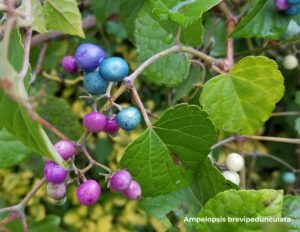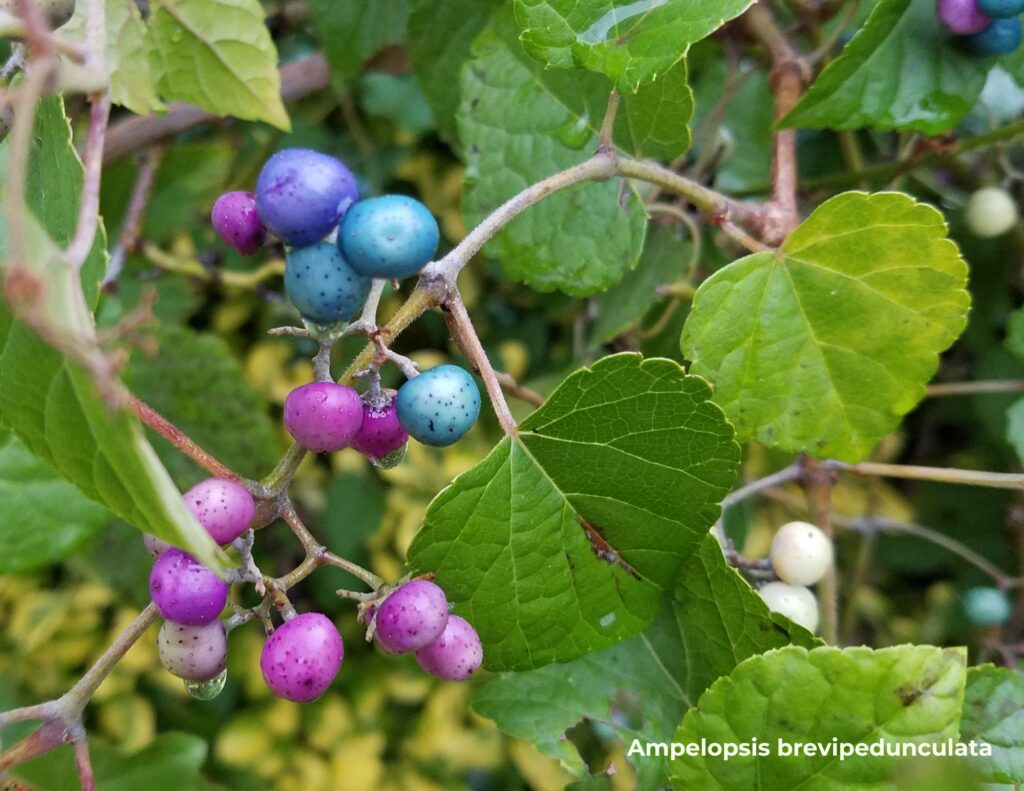Porcelain berry (Ampelopsis brevipedunculata) presents a significant ecological threat and has gained a foothold in natural habitats, disrupting native ecosystems and biodiversity. In Olmsted Parks, it forms dense shrouds that smother native trees and flowers, making it a very unwelcome plant. This deciduous vine can grow up to 20 feet in length and looks a bit like grapevine until it begins to produce berries that can come in shades of blue, purple, or occasionally white. These berries are attractive to birds, aiding in the spread of porcelain berry seeds over large distances.

Porcelain berry poses several environmental risks, primarily due to its aggressive growth and ability to form dense thickets. These thickets smother and shade out native vegetation, reducing plant diversity and altering habitats. This vine can climb trees and structures, further exacerbating its spread and impact. By outcompeting native species for resources such as sunlight, water, and nutrients, porcelain berry disrupts ecological balance and reduces habitat suitability for native wildlife.
To treat this plant, the Team for Healthy Parks often will cut the vine veils off of young trees or away from woodland edges. In areas with dense infestations, we my use selective herbicides in the fall, when the plant is drawing in resources and will be most affected by a smaller application. You can help by cutting this plant in your own yard, by planting native species, or by volunteering with OPC to help us keep our parks healthy and beautiful!
– Liz Winlock, Director of Natural Areas









